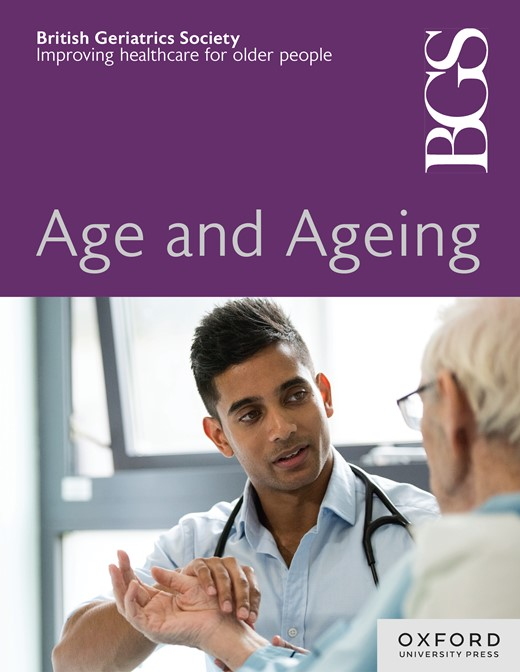老年评估和管理住院病人花很少的时间参与身体,认知或社会有意义的活动:时间-运动分析
IF 6
2区 医学
Q1 GERIATRICS & GERONTOLOGY
引用次数: 0
摘要
背景:老年评估和管理(GEM)服务为患有复杂疾病的老年人提供亚急性护理。有意义的活动对于预防住院老年人的功能下降很重要;然而,没有研究评估GEM住院患者参与此类活动的情况。目的了解GEM住院患者在白天进行有意义活动的时间比例,并调查病房环境和一周中的哪一天是否与活动水平相关。方法:本观察性研究使用行为映射对三个GEM病房的住院患者进行审计。在工作日连续12小时每隔10分钟进行一次观察,在周末每隔10.5小时进行一次观察。活动分为身体活动、认知活动和社交活动。Logistic混合模型用于分析参与有意义活动的相关因素。结果70例住院患者共观察到60 030分钟。总体而言,GEM住院患者分别将16%,6%和18%的观察时间用于身体,认知和社会有意义的活动。周末与较高的认知参与几率相关(OR 4.79, 95% CI 1.71-13.41, P = 0.003),但与较低的社交参与几率相关(OR 0.57, 95% CI 0.38-0.85, P = 0.006)。在病人病房外度过的时间与所有类型的有意义的活动呈正相关。研究发现,周末和工作日进行有意义的身体活动的几率没有变化。结论:与康复治疗相比,GEM住院患者对有意义活动的参与程度较低。活动水平与患者在病房外度过的时间之间的正相关强调了无障碍公共区域的重要性。在GEM住院环境中,需要采取干预措施促进积极参与。本文章由计算机程序翻译,如有差异,请以英文原文为准。
Geriatric evaluation and management inpatients spend little time participating in physically, cognitively or socially meaningful activity: a time–motion analysis
Background Geriatric Evaluation and Management (GEM) services provide subacute care for older adults with complex conditions. Meaningful activities are important for preventing functional decline in hospitalised older adults; however, no studies have evaluated GEM inpatients’ participation in such activities. Objective To determine the proportion of time GEM inpatients spend performing meaningful activities during the day and investigate whether ward environments and day of the week are associated with activity levels. Method This observational study used behavioural mapping to audit inpatients across three GEM wards. Observations were made at 10-minute intervals over 12 consecutive hours on weekdays and 10.5 hours on weekend days. Activities were categorised as physical, cognitive or social. Logistic mixed models were used to analyse factors associated with engagement in meaningful activities. Results In total, 60 030 minutes were observed among 70 inpatients. Overall, GEM inpatients spent 16%, 6% and 18% of observed time in physically, cognitively and socially meaningful activities, respectively. Weekend days were associated with higher odds of cognitive engagement (OR 4.79, 95% CI 1.71–13.41, P = .003) but lower odds of social engagement (OR 0.57, 95% CI 0.38–0.85, P = .006). Time spent outside patients’ rooms was positively associated with all types of meaningful activities. The odds of physically meaningful activity were not found to vary between weekends and weekdays. Conclusions GEM inpatients demonstrate lower engagement in meaningful activities compared to rehabilitation contexts. The positive association between activity levels and time spent outside patients’ rooms emphasises the importance of accessible communal areas. Interventions to promote active participation are needed in inpatient GEM settings.
求助全文
通过发布文献求助,成功后即可免费获取论文全文。
去求助
来源期刊

Age and ageing
医学-老年医学
CiteScore
9.20
自引率
6.00%
发文量
796
审稿时长
4-8 weeks
期刊介绍:
Age and Ageing is an international journal publishing refereed original articles and commissioned reviews on geriatric medicine and gerontology. Its range includes research on ageing and clinical, epidemiological, and psychological aspects of later life.
 求助内容:
求助内容: 应助结果提醒方式:
应助结果提醒方式:


